1. Stay away from CAN
CAN-based fertilisers are the main cause of nitrous oxide emissions in Ireland, which is a potent greenhouse gas. Using urea instead of CAN reduces these emissions by 71%.
The main issue with urea, however, is that just over 15% of the nitrogen (N) in urea is converted to ammonia and volatilised to the atmosphere. This is one of the main causes of ammonia emissions.
Although ammonia is not a greenhouse gas, it is still a huge problem for our air quality. Using protected urea, which inhibits ammonia loss, therefore ticks the box for both climate change and air quality.
2. Have enough slurry storage
Insufficient slurry storage puts pressure on the farm system in spring, leading to poor decisions around nutrient management. That’s a fluffy way of saying you’re not getting enough out of slurry, if you haven’t enough storage.
Being able to go out with slurry in late January or early February is great – slurry is an excellent source of nutrients and gives a great boost in terms of grass growth. However, it’s also great to have the option of not going out with slurry at this time if conditions are not so good.
This means that slurry spreading can be left until later in the spring when conditions are better, and it can be spread in fields that really need it, as opposed to being spread in fields that are dry enough for the tanker to travel on.
The best place for slurry is on the silage ground, as 2,500 to 3,000 gallons/acre of good-quality slurry provides all the phosphorus and potash needed for first cut of silage. The second best place for slurry is low soil fertility grazing paddocks.
Slurry storage is a lifetime investment and I’ve yet to meet a farmer who regrets having too much storage.
3. Find appropriate stocking rate
There are few more important figures in farming than the stocking rate – the number of livestock units divided by the number of hectares on the farm.
The old rule of thumb was one cow to the acre, and that still largely holds true, despite the cow and the acre changing over time.
Take a typical dairy cow now compared to 30 years ago. Back then, she was probably producing less than 300kg of milk solids/year, whereas now the typical cow is producing over 450kg MS/cow – a 50% increase.
Mass cannot be created or destroyed, so the extra milk solids must be coming from something. Cows are eating more now than they were 30 years ago.
It can also be argued that land is more productive now than it was 30 years ago, with that extra productivity coming from improved grass varieties and perhaps higher fertiliser inputs.
However, there’s also evidence that the amount of concentrate feed being fed to dairy cows has increased substantially over the same period.
With restrictions coming on fertiliser inputs and changing weather patterns causing more periods of very wet (then very dry) weather, the whole issue of stocking rate is coming back into focus.
Having a stocking rate that’s out of kilter with grass growth makes greater reliance on bought-in feed, higher costs of production and also more work and stress on the farmer.
4. Focus on clover
Reducing chemical N usage is a key part of Ireland’s strategy to reduce greenhouse gas emissions along with nitrate concentrations in Ireland’s inland and coastal waters.
Reducing reliance on chemical N makes Irish agriculture more sustainable only if the N is replaced by biological N (supplied by clover).
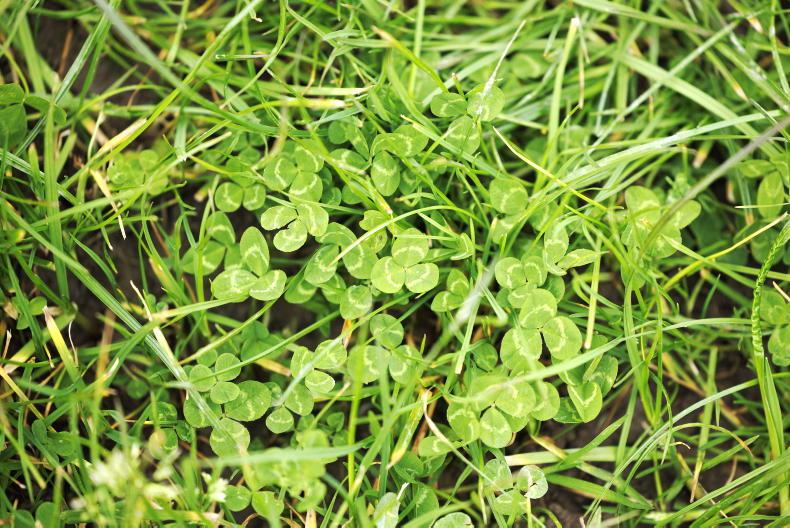
All grassland farms need to have a plan around getting clover established. \ Donal O' Leary
Simply reducing chemical N without any contingency will mean less grass will be available to feed animals. This in turn means either less animals on farm or more imported feed going into them – neither of which are good for the sustainability of farming.
Managing clover is not a simple solution to reducing chemical N, but it’s probably the only solution currently available.
All grassland farms need to have a plan around getting clover established. By far, the most straightforward approach is through a full reseeding; oversowing can work also, but success with that route tends to be as much weather-dependent as it is management-dependent.
Before any clover is sown, any underlying soil fertility issues need to be addressed, with soil pH and phosphorus and potassium levels very important for clover.
5. Soil pH
Inadequate soil pH is a scourge of good farming practice, but sadly affects many farms. Soils require 0.5t/acre of lime/year to replace offtakes and leaching.
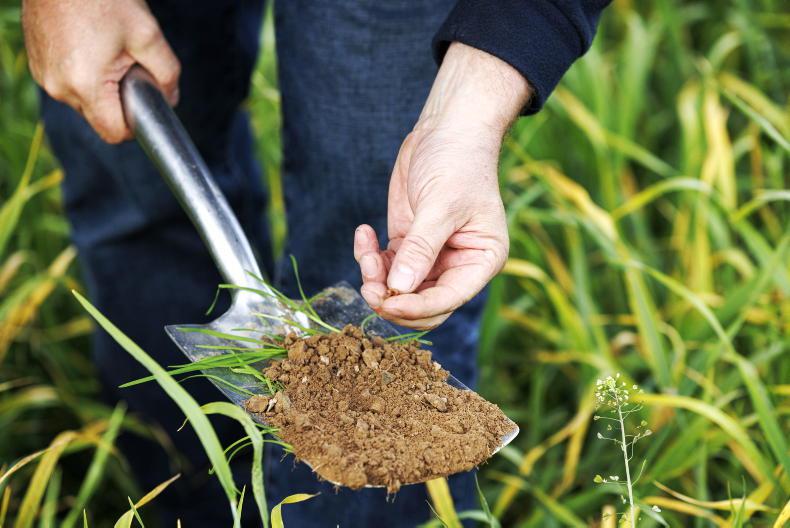
Raising soil pH on acidic soil increases N supply from organic matter by up to 65kg/ha/year. \ Donal O’ Leary
Soil testing is the best way to know how much lime is needed to reach target soil pH.
On mineral grassland soils, the target pH level is 6.3 – up to 6.8 on grass-clover swards. For tillage crops, the target soil pH is 6.5 for cereals and up to 6.8 for legumes and beet.
Raising soil pH on acidic soil increases N supply from organic matter by up to 65kg/ha/year. This means farmers can reduce chemical N applications by this amount and grow the same amount of grass annually.
All other nutrients are more available to the plant when soil pH is adequate.
6. Biodiversity
There are a number of what I consider easy wins when it comes to improving biodiversity on Irish farms. The number-one step must be to better manage existing habitats, such as hedgerows and so on, as spaces for nature.
For example, the practice of cutting hedgerows into small box-shapes needs to stop. There needs to be diversity within a hedge and across hedgerows on a farm.
Other things, like not spraying weed killer under wires in a hedgerow and keeping fences out from hedgerows, will benefit biodiversity greatly.
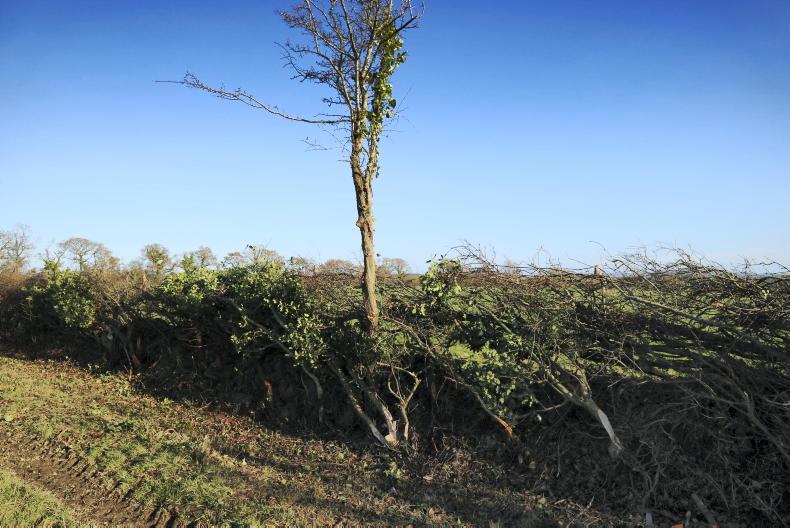
There needs to be diversity within a hedge and across hedgerows on a farm.
Where trees are to be planted, avoid the temptation of planting them in wet spots on the farm, because that will change what is probably an already diverse habitat. It is better to use the trees to improve diversity in a part of the farm lacking diversity.
7. Financial sustainability
There is a saying that you cannot be green if you are in the red – meaning, you cannot invest in the environment if the farm is not making profit. Profit is needed in farming to provide family income, invest for the future and invest in sustainability initiatives.
Improving the profitability of farming in Ireland is an essential part of sustainability.
1. Stay away from CAN
CAN-based fertilisers are the main cause of nitrous oxide emissions in Ireland, which is a potent greenhouse gas. Using urea instead of CAN reduces these emissions by 71%.
The main issue with urea, however, is that just over 15% of the nitrogen (N) in urea is converted to ammonia and volatilised to the atmosphere. This is one of the main causes of ammonia emissions.
Although ammonia is not a greenhouse gas, it is still a huge problem for our air quality. Using protected urea, which inhibits ammonia loss, therefore ticks the box for both climate change and air quality.
2. Have enough slurry storage
Insufficient slurry storage puts pressure on the farm system in spring, leading to poor decisions around nutrient management. That’s a fluffy way of saying you’re not getting enough out of slurry, if you haven’t enough storage.
Being able to go out with slurry in late January or early February is great – slurry is an excellent source of nutrients and gives a great boost in terms of grass growth. However, it’s also great to have the option of not going out with slurry at this time if conditions are not so good.
This means that slurry spreading can be left until later in the spring when conditions are better, and it can be spread in fields that really need it, as opposed to being spread in fields that are dry enough for the tanker to travel on.
The best place for slurry is on the silage ground, as 2,500 to 3,000 gallons/acre of good-quality slurry provides all the phosphorus and potash needed for first cut of silage. The second best place for slurry is low soil fertility grazing paddocks.
Slurry storage is a lifetime investment and I’ve yet to meet a farmer who regrets having too much storage.
3. Find appropriate stocking rate
There are few more important figures in farming than the stocking rate – the number of livestock units divided by the number of hectares on the farm.
The old rule of thumb was one cow to the acre, and that still largely holds true, despite the cow and the acre changing over time.
Take a typical dairy cow now compared to 30 years ago. Back then, she was probably producing less than 300kg of milk solids/year, whereas now the typical cow is producing over 450kg MS/cow – a 50% increase.
Mass cannot be created or destroyed, so the extra milk solids must be coming from something. Cows are eating more now than they were 30 years ago.
It can also be argued that land is more productive now than it was 30 years ago, with that extra productivity coming from improved grass varieties and perhaps higher fertiliser inputs.
However, there’s also evidence that the amount of concentrate feed being fed to dairy cows has increased substantially over the same period.
With restrictions coming on fertiliser inputs and changing weather patterns causing more periods of very wet (then very dry) weather, the whole issue of stocking rate is coming back into focus.
Having a stocking rate that’s out of kilter with grass growth makes greater reliance on bought-in feed, higher costs of production and also more work and stress on the farmer.
4. Focus on clover
Reducing chemical N usage is a key part of Ireland’s strategy to reduce greenhouse gas emissions along with nitrate concentrations in Ireland’s inland and coastal waters.
Reducing reliance on chemical N makes Irish agriculture more sustainable only if the N is replaced by biological N (supplied by clover).

All grassland farms need to have a plan around getting clover established. \ Donal O' Leary
Simply reducing chemical N without any contingency will mean less grass will be available to feed animals. This in turn means either less animals on farm or more imported feed going into them – neither of which are good for the sustainability of farming.
Managing clover is not a simple solution to reducing chemical N, but it’s probably the only solution currently available.
All grassland farms need to have a plan around getting clover established. By far, the most straightforward approach is through a full reseeding; oversowing can work also, but success with that route tends to be as much weather-dependent as it is management-dependent.
Before any clover is sown, any underlying soil fertility issues need to be addressed, with soil pH and phosphorus and potassium levels very important for clover.
5. Soil pH
Inadequate soil pH is a scourge of good farming practice, but sadly affects many farms. Soils require 0.5t/acre of lime/year to replace offtakes and leaching.

Raising soil pH on acidic soil increases N supply from organic matter by up to 65kg/ha/year. \ Donal O’ Leary
Soil testing is the best way to know how much lime is needed to reach target soil pH.
On mineral grassland soils, the target pH level is 6.3 – up to 6.8 on grass-clover swards. For tillage crops, the target soil pH is 6.5 for cereals and up to 6.8 for legumes and beet.
Raising soil pH on acidic soil increases N supply from organic matter by up to 65kg/ha/year. This means farmers can reduce chemical N applications by this amount and grow the same amount of grass annually.
All other nutrients are more available to the plant when soil pH is adequate.
6. Biodiversity
There are a number of what I consider easy wins when it comes to improving biodiversity on Irish farms. The number-one step must be to better manage existing habitats, such as hedgerows and so on, as spaces for nature.
For example, the practice of cutting hedgerows into small box-shapes needs to stop. There needs to be diversity within a hedge and across hedgerows on a farm.
Other things, like not spraying weed killer under wires in a hedgerow and keeping fences out from hedgerows, will benefit biodiversity greatly.

There needs to be diversity within a hedge and across hedgerows on a farm.
Where trees are to be planted, avoid the temptation of planting them in wet spots on the farm, because that will change what is probably an already diverse habitat. It is better to use the trees to improve diversity in a part of the farm lacking diversity.
7. Financial sustainability
There is a saying that you cannot be green if you are in the red – meaning, you cannot invest in the environment if the farm is not making profit. Profit is needed in farming to provide family income, invest for the future and invest in sustainability initiatives.
Improving the profitability of farming in Ireland is an essential part of sustainability.










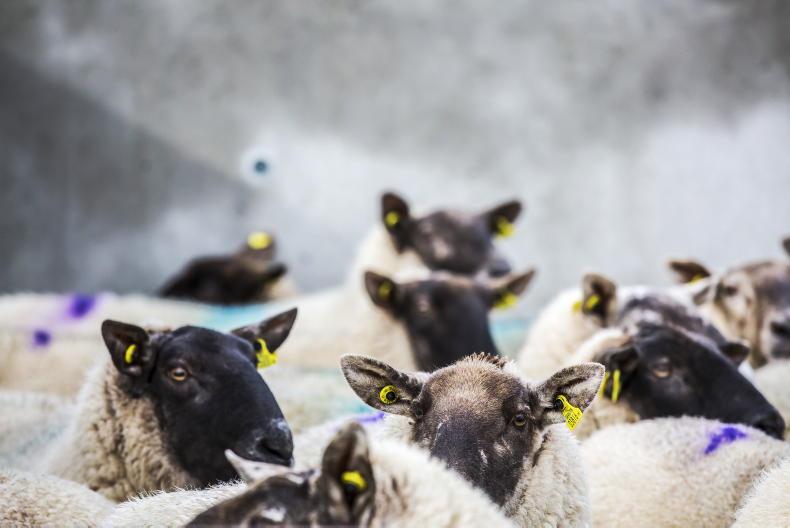

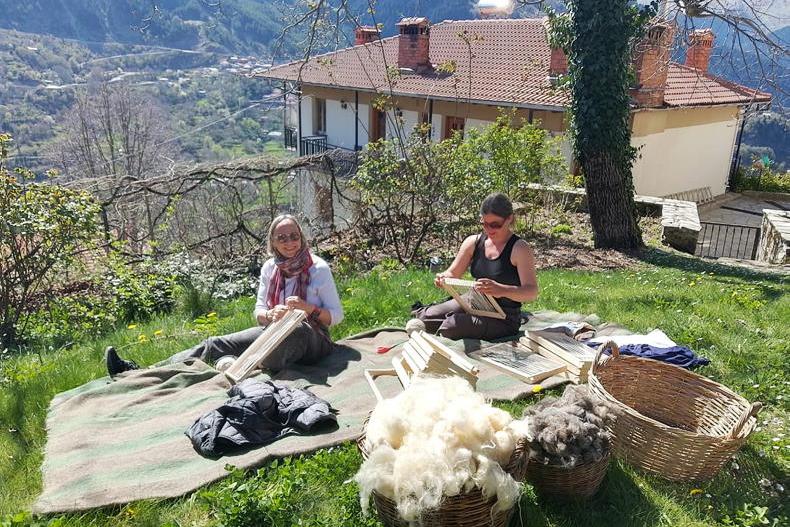
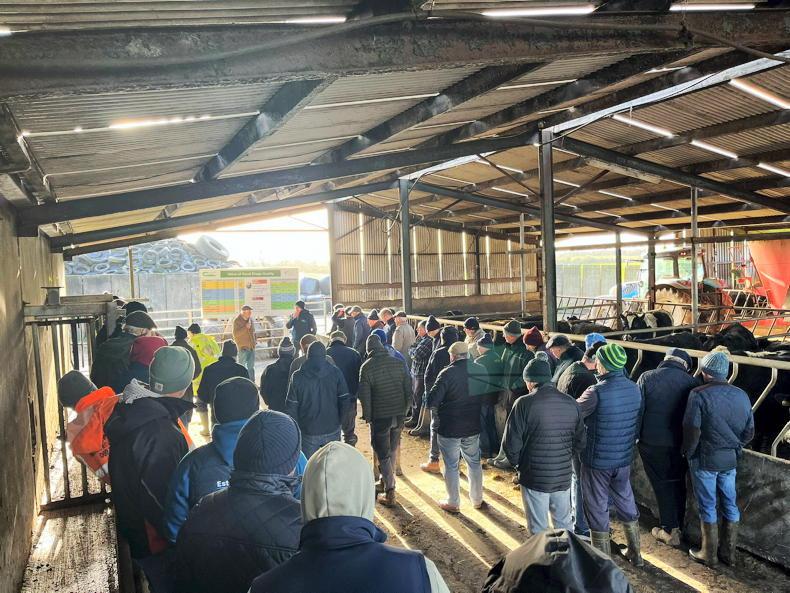
SHARING OPTIONS